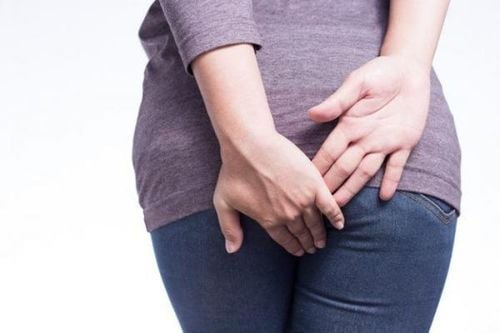This is an automatically translated article.
Rectal prolapse and hemorrhoids are diseases with similar symptoms. However, these are two completely different conditions. Misdiagnosis will lead to incorrect treatment and affect the health of the patient.
Rectal prolapse is a common disease in children 1-3 years old and people over 50 years old. Although not too dangerous, this disease causes many inconveniences to the patient's life. Patients will be diagnosed with rectal prolapse when a part or all of the rectal wall turns and comes out through the anal opening, the disease is caused by many different causes and also has many levels of progression, methods. The treatment plan for rectal prolapse will depend on the medical condition and the cause.
Hemorrhoids can be encountered in any subject, most patients have the same condition that is treated quite late due to fear and subjective psychology. Currently, surgery is one of the leading methods of treating hemorrhoids with long-term effectiveness.
Distinguishing rectal prolapse and hemorrhoids can be based on the following factors:
Distinguishing through prolapse of hemorrhoids and rectal prolapse: Hemorrhoids often have a prolapsed surface, which is the mucosa, prolapsed Hemorrhoids are usually short and made up of one or more irregular tufts. Rectal prolapse is a prolapse of part or all of the rectum. The sa mass is long and round in a concentric circle. This prolapsed mass secretes a lot of moist mucus. Distinguishing through bleeding when defecating: Hemorrhoids from the early stages of the disease have bloody stools, the amount of bleeding depends on the severity of the disease. Initially, the bleeding is usually small, the blood only sticks to the stool or toilet paper, and the hemorrhoids are small, so they do not cause pain. As the disease progresses, the hemorrhoids swell and bleed more, which can drip or shoot. Rectal prolapse causes bleeding during defecation. The blood is bright red, has little discharge, and is often mixed in with the stool. In addition to the characteristics of prolapse and bleeding during bowel movements, imaging methods should be relied on to accurately diagnose rectal prolapse and hemorrhoids. Video-proctoscope, magnetic resonance imaging (MRI Dynamic defecography) can be used... Rectal prolapse and hemorrhoids although both involve the rectal area - butt are 2 different diseases. Knowing the differences between rectal prolapse and hemorrhoids will help diagnose the disease more accurately and treat it more effectively.
Please dial HOTLINE for more information or register for an appointment HERE. Download MyVinmec app to make appointments faster and to manage your bookings easily.













